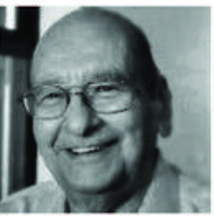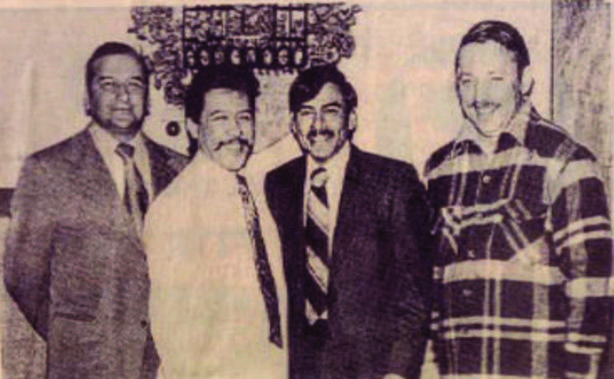Richard Moya
Biographical Sketch of Richard Moya
County Commissioner Richard A. Moya is best known as the first Hispanic to be elected to any public office in Austin/Travis County, where he was initially elected in 1970. Moya was born in Austin in 1932 and attended local schools. He was inspired by the public service work performed by Roy Guerrero, who ran the Pan American Recreation Center. In high school he and two friends started a newspaper, which he edited, that was so popular even the teachers read it. He married soon after high school. Moya served in the army during the Korean War and became Sergeant First Class. He had been a printer before the war, and returned to that work when he returned. Later, he worked as an investigator for Legal Aid, a War on Poverty program. Moya was Deputy Chief of Staff for Governor Ann Richards. Once he began work as a County Commissioner, he quickly started to address issues he already knew about, including organizing the county government to better serve the people. During his four terms as County Commissioner, Moya created CARTS (Capital Area Rural Transportation system), expanded the road system, and created programs to help ex-convicts to get back on their feet. He passed away In February 2017
 | ||||||
Richard Moya recalls:
In 1968, there was a strike going on at a place called Economy Furniture here in Austin. The Hispanic workers
there felt they weren’t being paid fair wages or being promoted properly. So they decided to unionize. When they voted to unionize, the owner of the company, Mr. Milton Smith I think that was his name, refused to recognize them so they went on strike.
That strike, for some reason, in my opinion, the workers were able to unify the community around an issue and it
galvanized the whole community like never before. A lot of us who were activists really got involved in that strike and supporting the strikers. Another thing that happened in 1968 was a landmark Supreme Court decision that had been filed against the county commissioners in Midland County. The suit had been filed to force them to draw their districts according to population as opposed to geographic lines like they were doing.
A few months after that decision came down, a local attorney by the name of Gabe Gutierrez made us aware of the decision and what it meant. Well a bunch of us got out the maps and looked at Travis County and we saw that the County Commissioner districts were drawn based on geographical lines using Congress Avenue to divide the precincts East and West and the river (Colorado River) to divide the precincts North and South.
And in looking at Precinct 4, which was the precinct in which most of us lived in at that time, and looking at the
population figures, it became clear to us that Mr. Boothe, the county commissioner, was representing only about 12% of the population of Travis County. Since the Supreme Court decision spoke about how the precincts should be drawn with populations of about 25% or as close as possible, we realized they were going to have to redraw the lines.
So to make a long story short, the Travis County attorney told them they were going to have to redraw the lines and that they were going to have to do it in time for the elections in 1970. One of the ideas that came up was to put all the Blacks and Hispanics in one district. We and the Blacks said that would not be fair. There was a lot of arguing that went back and forth. Finally the line was draw using 7th street. So when the districts finally got set we shifted our discussion to who would run.
A lot of names were brought up until there were just three us who were really interested. The three were Paul Tovar, myself and Jesse Torres. We debated back and forth who could run an effective campaign and win, who could raise the necessary money and all that stuff. Finally Jesse decided to bow out and that left me and Paul. Neither one of us could agree who would be the candidate. Paul has his own group of supporters and I had my group which included a lot of the Economy Furniture strikers. So on the last day to file Paul filed, I filed and the incumbent Mr. Boothe filed to run for the position of Travis County Commissioner Precinct 4.
Mr. Boothe had been the Commissioner for about 20 years, Paul was a community leader and worked as a pharmacist and I worked for legal aide. So the campaign starts. Long story short, it was a very difficult time for Paul and I. There was a lot of bitterness. So finally the election comes. Mr. Boothe received the most votes and I got the second highest number. Paul came in third. Because Boothe didn’t get over 50% of the vote we had to go into a run-off election. Paul ended up endorsing me and in the run-off I beat Mr. Boothe.
We were shocked to say the least. But looking back now, I believe that the reason we beat him was because we concentrated on five boxes. They were the five Hispanic boxes. We worked them and we worked them. But we were very fearful. The election was on a Saturday, June 5, 1970. Our race was the only one on the ballot. And so the big question was, why would anybody bother to turn out to vote on a Saturday
in a race like ours?
Well, we spent the whole day knocking on doors getting our people out to vote. By the time the polls closed we were dead tired. I don’t even remember if I stopped to eat. At 7:00pm the polls closed and we went down to the courthouse to wait for the results. As the boxes were announced I was behind. It didn’t look good. I was behind by about 600 votes and there were two boxes still out, Go Valle and Pan Am. The reporters were already circling around getting ready to write my political obituary. I told the reporters, “Look we still have two boxes out, let’s wait and see what the vote is.” Well, when they opened those boxes and counted the votes, I ended up with 1200 votes to Booth’s 125. I ended up beating him by about 600 votes. I’ll never forget that day.
ABOVE: Richard Moya, Gonzalo Barrientos, Jr. Johnny Treviño and Gustavo Garcia.

